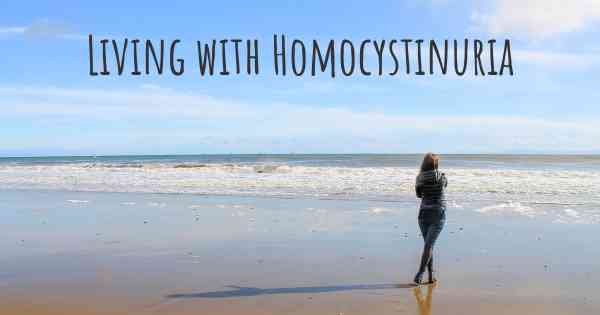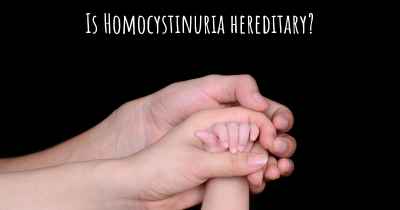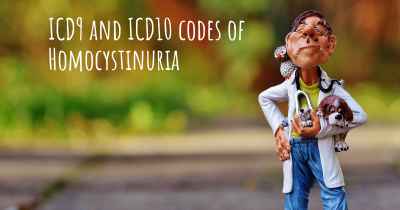Living with Homocystinuria. How to live with Homocystinuria?
Can you be happy living with Homocystinuria? What do you have to do to be happy with Homocystinuria? Living with Homocystinuria can be difficult, but you have to fight to try to be happy. Have a look at things that other people have done to be happy with Homocystinuria

Living with Homocystinuria
Homocystinuria is a rare genetic disorder that affects the body's ability to break down certain amino acids. This condition can lead to a buildup of homocysteine in the blood, which can cause a range of health problems if left untreated. However, with proper management and lifestyle adjustments, individuals with Homocystinuria can lead fulfilling lives.
Medical Management
Effective management of Homocystinuria involves a combination of medical interventions and lifestyle modifications. It is crucial to work closely with a healthcare team, including geneticists, metabolic specialists, and dietitians, to develop a personalized treatment plan.
Dietary Modifications: A low-protein diet, specifically low in methionine, is typically recommended for individuals with Homocystinuria. This involves avoiding foods high in methionine, such as meat, fish, eggs, and dairy products. Instead, emphasis is placed on consuming foods low in methionine, including fruits, vegetables, grains, and certain legumes. Supplementation with special medical formulas may also be necessary to ensure adequate nutrition.
Vitamin and Mineral Supplements: Individuals with Homocystinuria often require supplementation with specific vitamins and minerals, such as vitamin B6, vitamin B12, folate, and betaine. These supplements help to lower homocysteine levels and support overall health.
Medication: In some cases, medication may be prescribed to further reduce homocysteine levels. This may include medications like pyridoxine (vitamin B6), betaine, or folate supplements. Regular monitoring of homocysteine levels is essential to adjust medication dosages as needed.
Monitoring and Support
Living with Homocystinuria requires ongoing monitoring and support to ensure optimal health and well-being.
Regular Medical Check-ups: It is important to schedule regular check-ups with your healthcare team to monitor homocysteine levels, assess nutritional status, and address any concerns or complications that may arise.
Psychological Support: Coping with a chronic condition like Homocystinuria can be challenging. Seeking psychological support, such as counseling or joining support groups, can provide emotional support and help individuals and their families navigate the physical and emotional aspects of living with the condition.
Lifestyle Adjustments
Adopting certain lifestyle adjustments can greatly improve the quality of life for individuals with Homocystinuria.
Exercise and Physical Activity: Engaging in regular physical activity is important for overall health and well-being. However, it is essential to consult with your healthcare team to determine the appropriate level and type of exercise that suits your individual needs.
Education and Awareness: Educating yourself and others about Homocystinuria can help raise awareness and understanding of the condition. This can be done through sharing personal experiences, participating in advocacy groups, or organizing awareness campaigns.
Family Planning: Homocystinuria is an inherited condition, so it is important to consider genetic counseling and family planning options if you are planning to have children. Genetic counseling can provide information about the risk of passing on the condition and discuss available options.
Conclusion
Living with Homocystinuria requires a multidisciplinary approach involving medical management, monitoring, and lifestyle adjustments. By following a low-protein diet, taking necessary supplements, and working closely with healthcare professionals, individuals with Homocystinuria can lead fulfilling lives while minimizing the risk of complications. Remember, each person's experience with Homocystinuria may vary, so it is important to consult with your healthcare team for personalized guidance and support.








